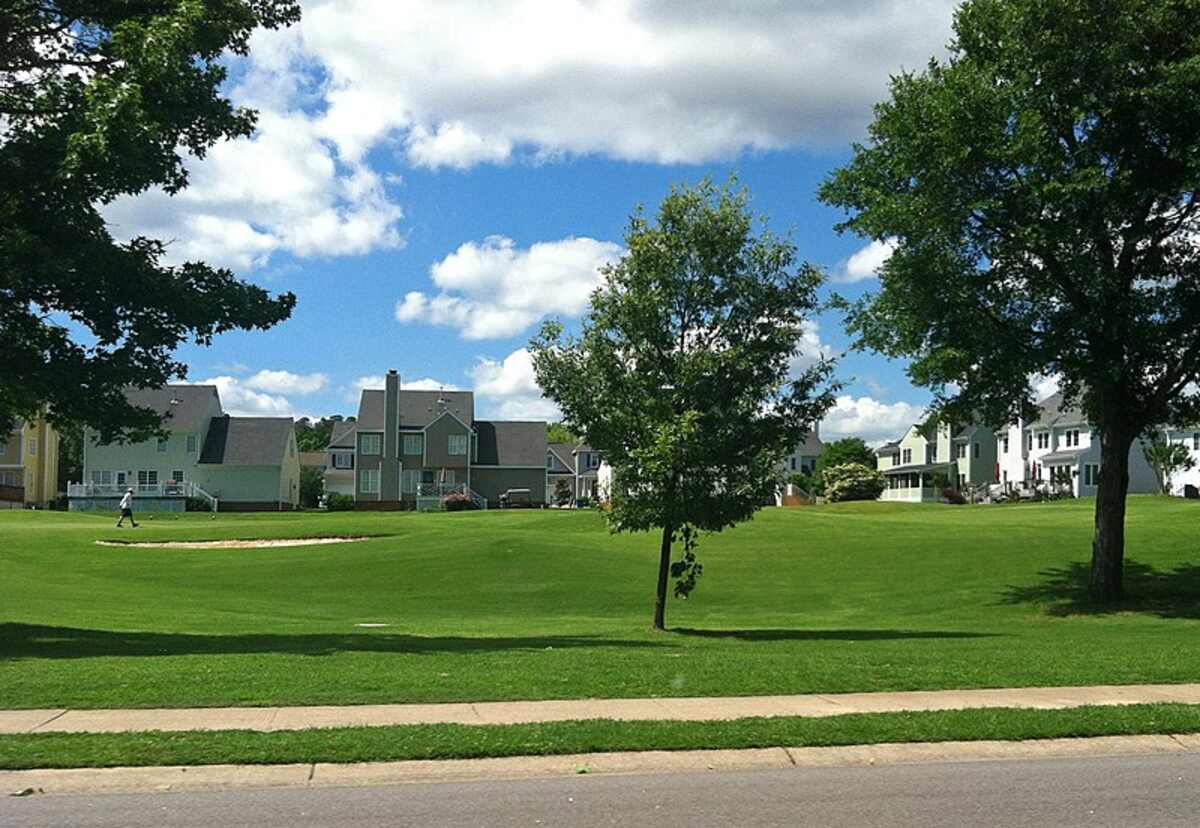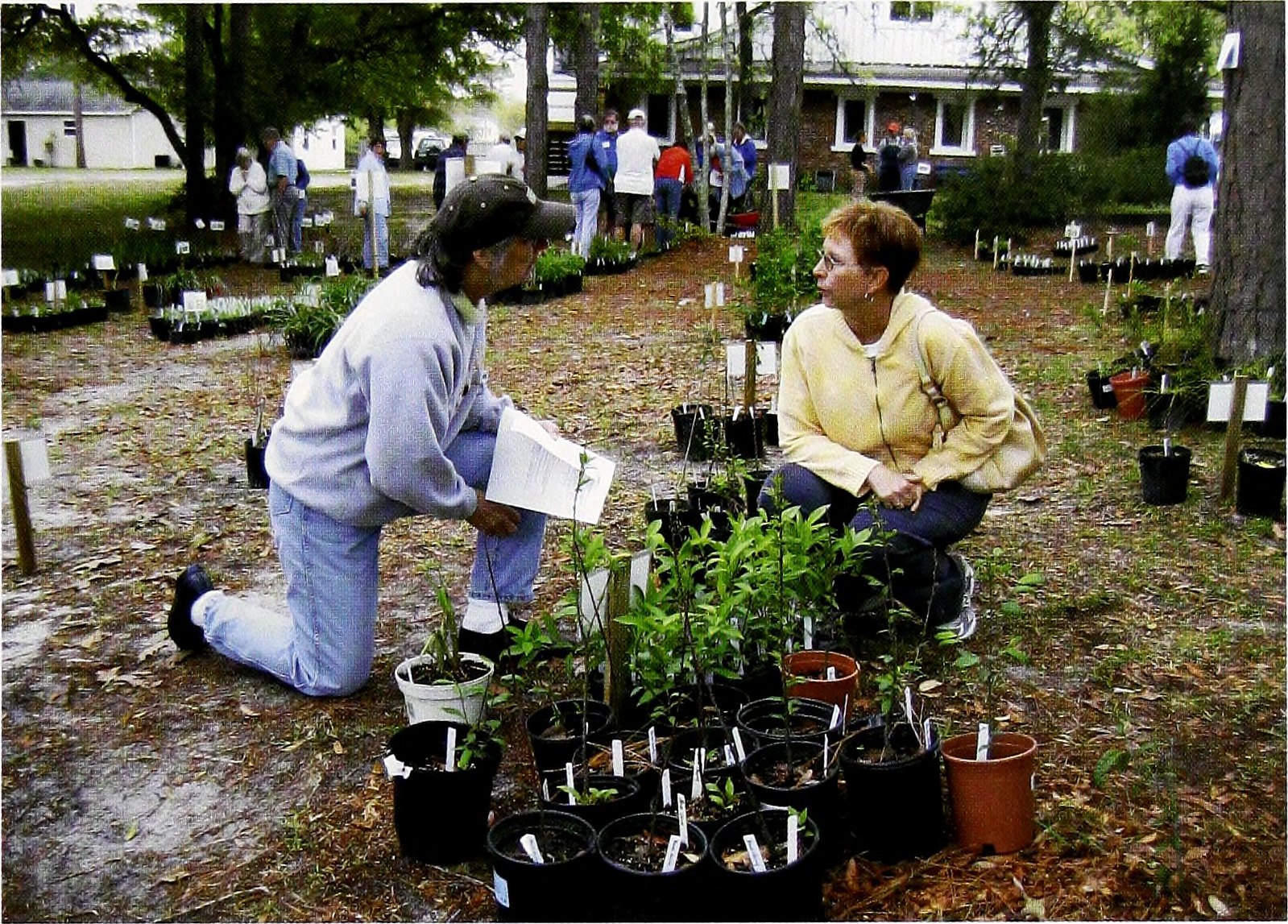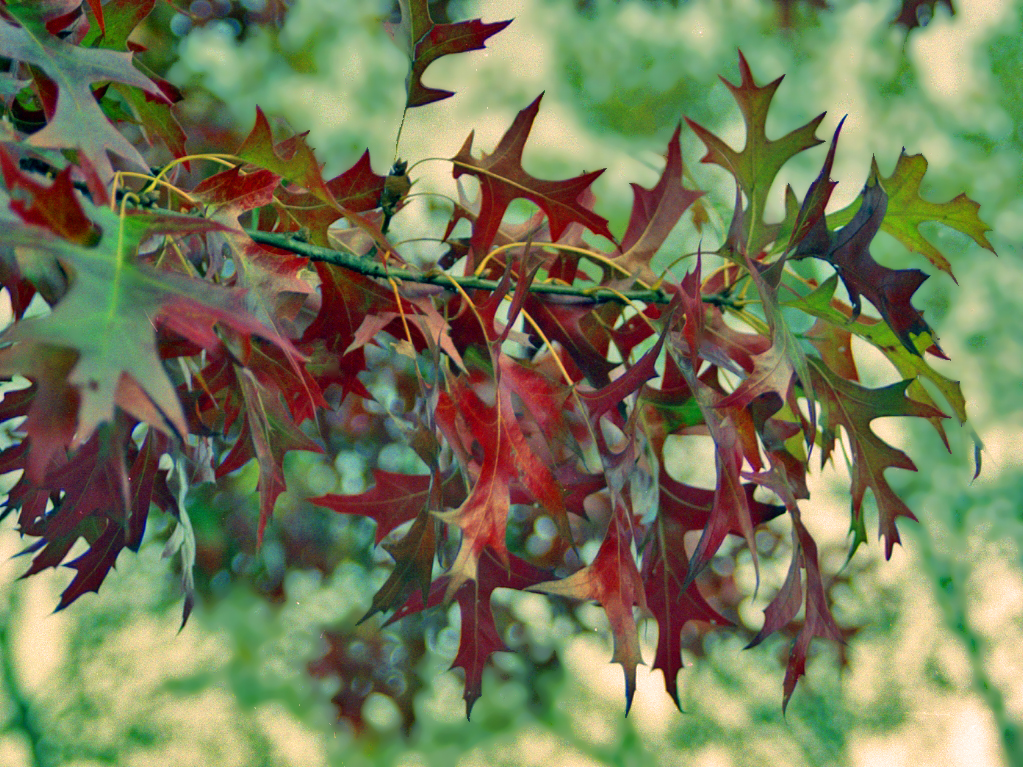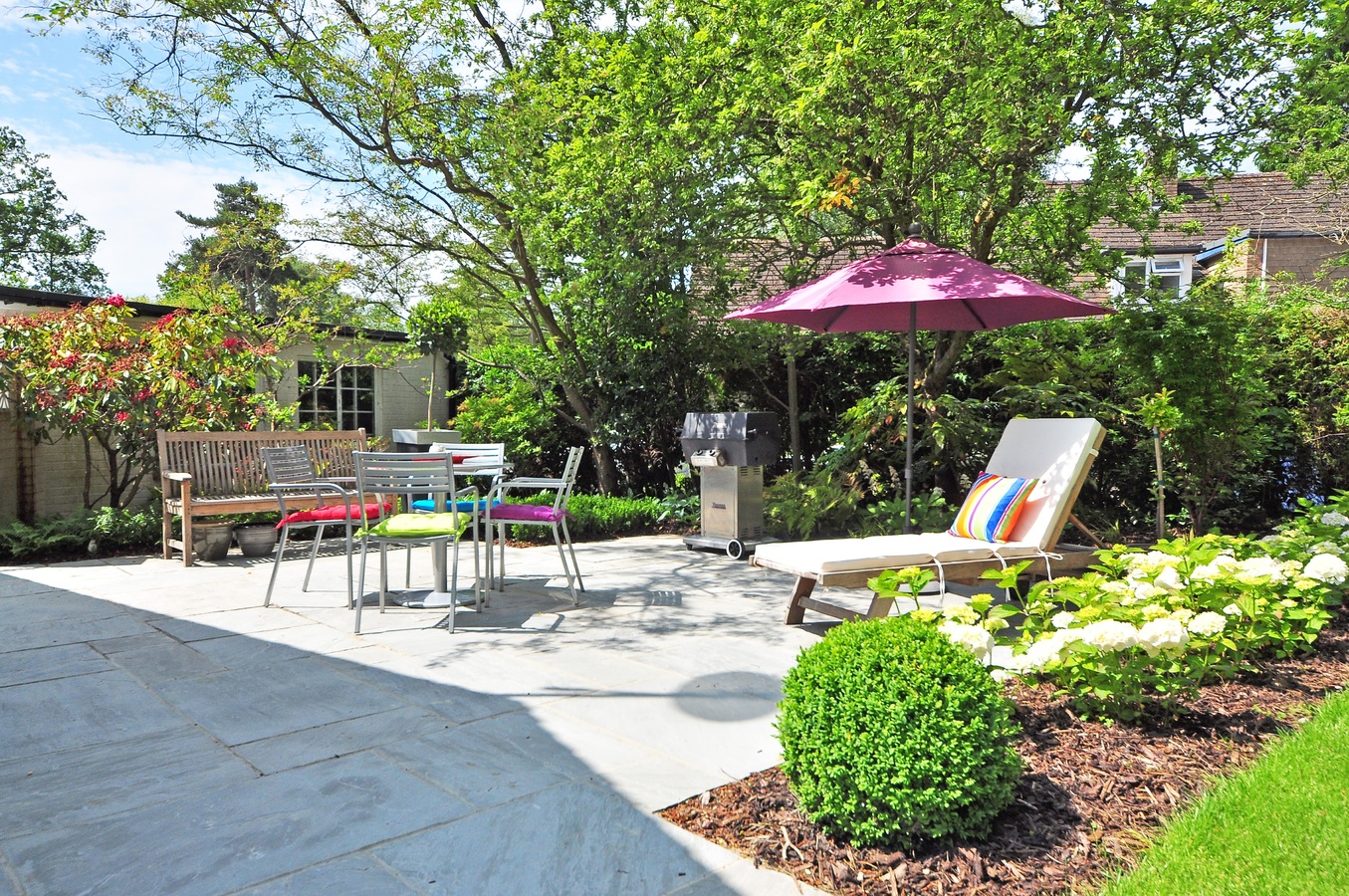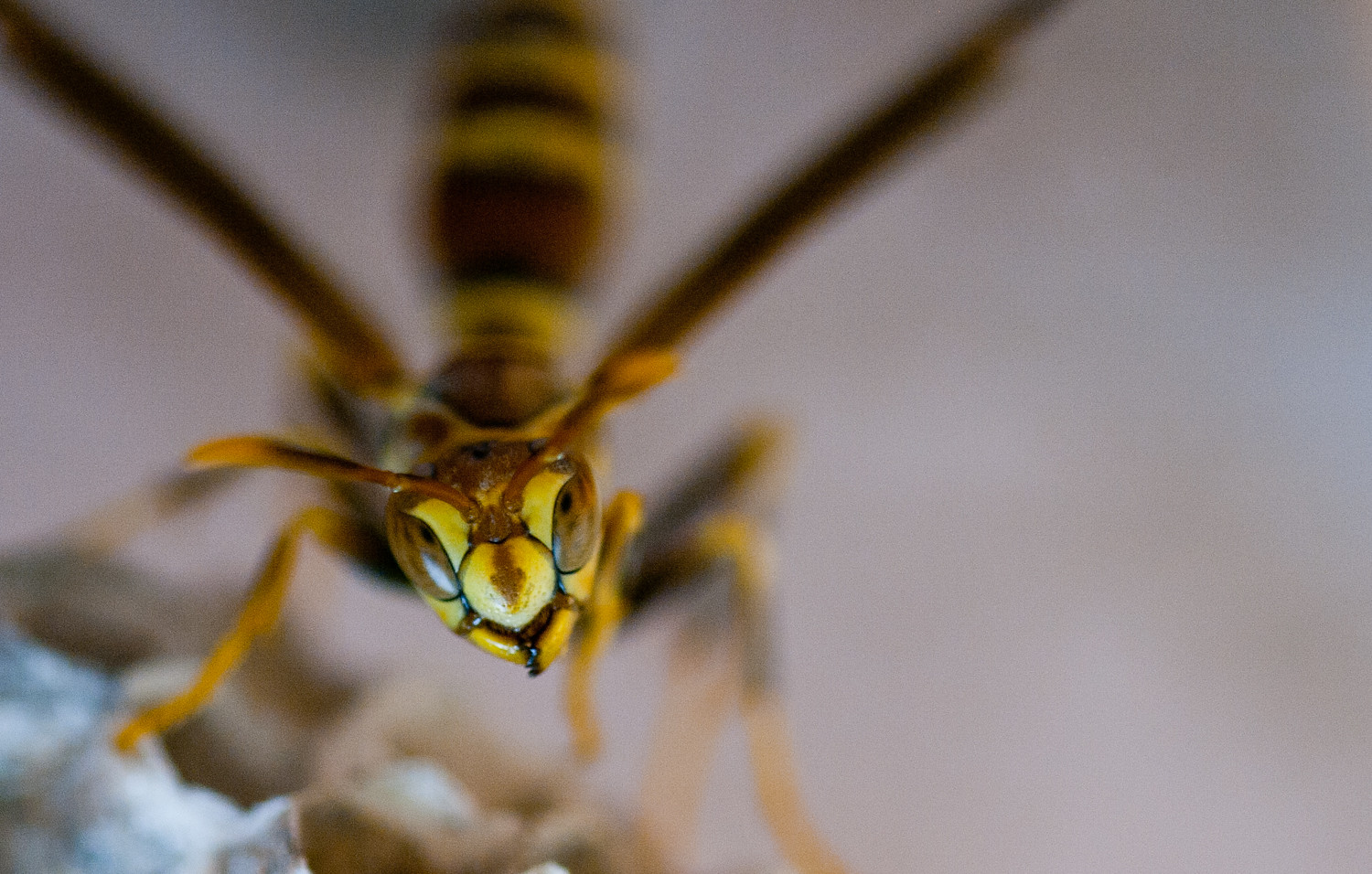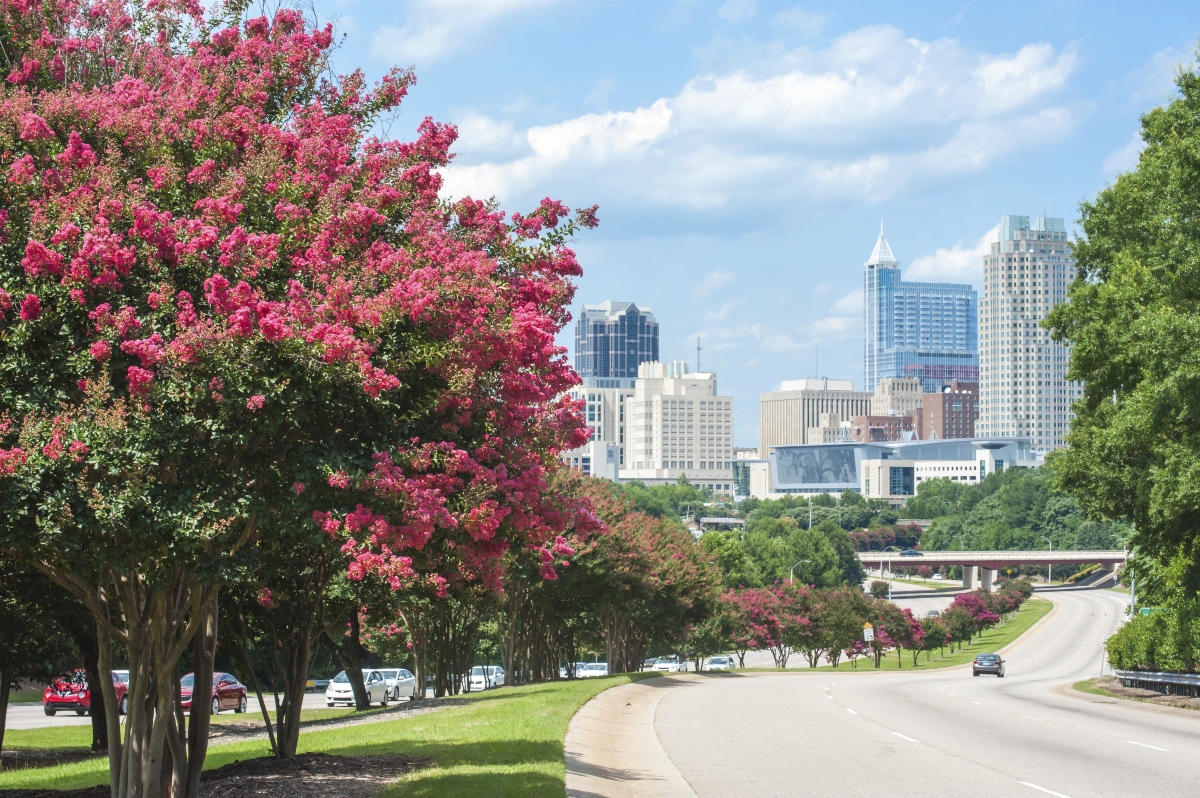
You may live in the City of Oaks, but there’s a wealth of other trees suitable for your Raleigh home landscape design.
Let’s take a look at the large trees and small trees that will bring beauty, shade, privacy, wildlife, and even food to your yard.
1. Plant Trees to Unify an Outdoor Space
Haphazardly placed landscape trees will create a sense of chaos and clutter, so be sure to situate your selections purposefully. Choose a tree to stand out as a focal point, group a small cluster of trees together to frame your house or line a walkway, or mass plant conifers/evergreen trees to provide privacy.
For a focal point:
- Mockernut hickory (carya tomentosa)
- Red maple tree (acer rubrum)
- Yellow birch tree (betula alleghaniensis)
- Allegheny serviceberry (amelanchier laevis)
- Sweet bay magnolia (magnolia virginiana)
For a small grouping:
- Eastern redbud (cercis canadensis)
- Atlantic white cedar (chamaecyparis thyoides)
- Silky dogwood (cornus amomum)
- Washington hawthorn (crataegus phaenopyrum)
- Sourwood (oxydendrum arboreum)
For mass plantings for privacy:
- White spruce (picea laxa)
- Bristlecone pine (pinus aristata)
- Swiss stone pine (pinus cembra)
- Eastern arborvitae (platycladus orientalus)
- Early lilac (syringa oblata)
2. Use Deciduous Trees to Conserve Energy
In summertime, the green leaves of deciduous trees furnish your yard and home with shade. Their canopies help reduce cooling costs.
Forestry service experts say the most important place to locate shade trees is on the west side of your home, as that’s where the sun shines brightest during the afternoon heat. The second-most important place is the east side where the sun rises. Examples include:
- Trident maple
- Japanese cherry birch
- Yellowwood
- Flowering dogwood
- American beech
Once they lose their leaves in the fall, these trees allow sunlight to filter in, warming up your home to help keep heating costs low.
3. Showcase Spring and Fall Color with Flowering Trees
By varying the types of flowering trees in your landscape design, your outdoor spaces can boast color all year long.
Additionally, flowering, ornamental trees fill your front yard, backyard, and side yard with sweet-smelling aromas, which can help boost your mood and reduce stress. These towering plants can also bring diversity in texture, size, and form to your property.
Flowering trees for spring color include:
- Crabapple trees
- Red buckeyes
- River birch trees
- American fringe trees
Flowering trees to plant for fall color include:
- Witch hazel
- Crape myrtle
- Chinese pearlbloom
- Japanese maple
4. Grow Food with Fruit and Nut Trees
Dreaming of plucking fresh fruit from your own backyard or harvesting homegrown nuts for a healthy snack? Choose an area with ample space that receives at least six hours of full sun and select species that will thrive in the climate and soil of the Piedmont.
Experts recommend the following fruit and nut trees for Raleigh yards:
- Pomegranate
- Apple
- Peach
- Pear
- Plum
- Cherry
- Pecan
- Chestnut
5. Plant the Right Tree in the Right Place
The site you select to plant your tree matters. Depending on the type, there should be ample space for the tree to root and spread. The trees also need access to full sun or partial shade, and compatible soil. The function of the tree — be it for a focal point, shade, privacy, or windbreak — and whether you have a small yard or a large one will also determine its placement.
Once you’ve narrowed down the list of trees you want for your yard, visit your local garden center and decide on trees sold in containers, balled and burlapped, or with bare roots. If DIY-ing your installation, container-grown trees may be your best bet, as they can be planted at any time and don’t suffer much during transplantation.
Installing your trees in the right place will cut down on serious maintenance issues and set the trees on a path toward longevity. Mature trees increase property value and, according to the North Carolina Forestry Association, an acre of mature trees can absorb the amount of carbon dioxide emitted by a car that’s been driven 26,000 miles.
Landscaping with Trees in Raleigh: Other Things to Know
What trees grow best in the Triangle?
Raleigh’s area of the Piedmont region is within plant hardiness zones 7b and 8a. Besides oak trees, several other trees will thrive here.
- Silver firs
- Crape myrtles
- Apple trees
- Plum trees
- Pecan trees
- Japanese maples
- Eastern arborvitaes
- Mockernut hickories
- American beeches
- Several native species
What is the best tree to plant in the front yard?
Opt for specimen trees, which will serve as focal points, and shade trees, which will help lower cooling costs in the summer. Planting trees that attract butterflies and birds can also help enhance your curb appeal. Examples include:
- Maple trees
- Serviceberry trees
- Birch trees
- Hickory trees
- Dogwood trees
What trees should I avoid?
The worst trees to plant in Raleigh include the Bradford pear, tree of heaven, white ash, honey locust, and mimosa.
When to Call a Landscaping Professional
The DIY route for creating your treescape is the least expensive upfront, but if you’re not an expert in landscape design, mistakes could lead to costly repairs down the line.
Going with a Raleigh landscape architect, whether it’s to design a plan only or to design and install, will ensure trees are planted in the right places and with the utmost care.
Main Photo Credit: Sharkshock / Adobe Stock
